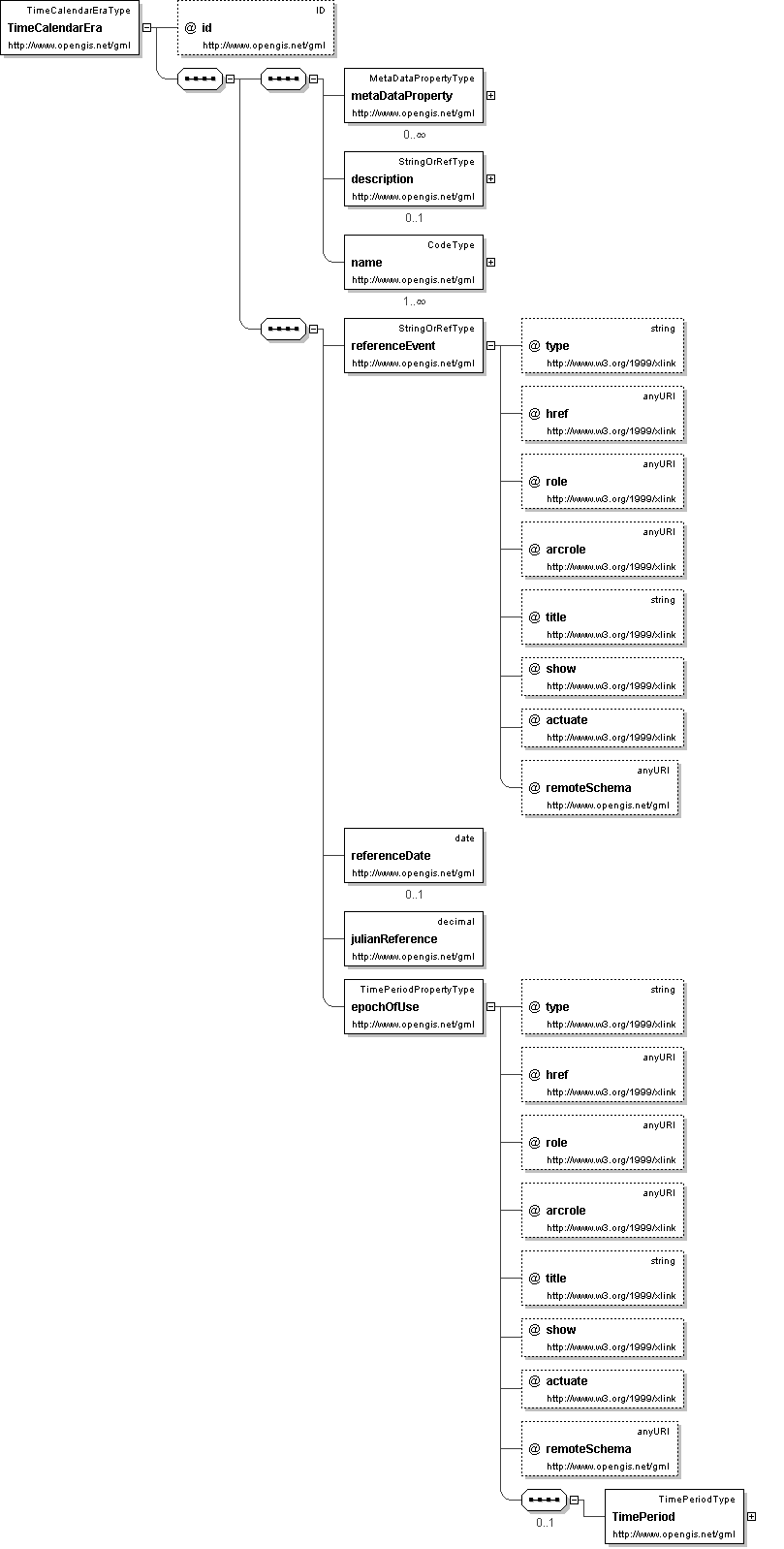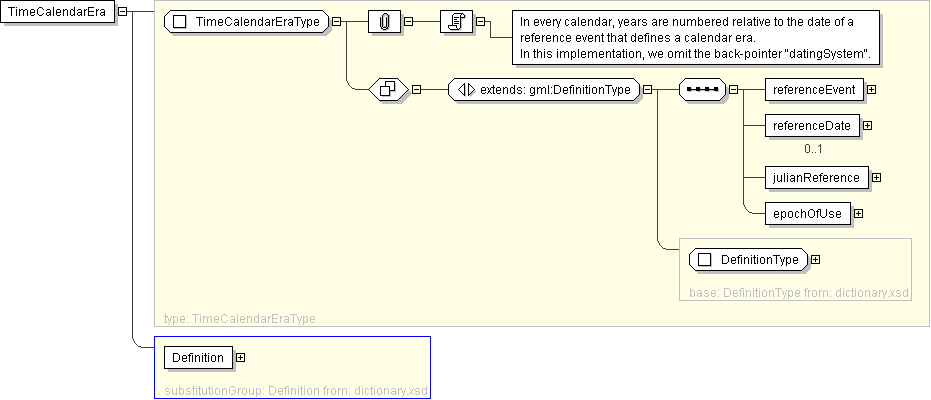
|
| Name | TimeCalendarEra |
|---|---|
| Type | gml:TimeCalendarEraType |
| Nillable | no |
| Abstract | no |

'Name or description of a mythical or historic event which fixes the position of the base scale of the calendar era.'
'Date of the referenceEvent expressed as a date in the given calendar. In most calendars, this date is the origin (i.e., the first day) of the scale, but this is not always true.'
'Julian date that corresponds to the reference date. The Julian day numbering system is a temporal coordinate system that has an origin earlier than any known calendar, at noon on 1 January 4713 BC in the Julian proleptic calendar. The Julian day number is an integer value; the Julian date is a decimal value that allows greater resolution. Transforming calendar dates to and from Julian dates provides a relatively simple basis for transforming dates from one calendar to another.'
'Period for which the calendar era was used as a basis for dating.'
